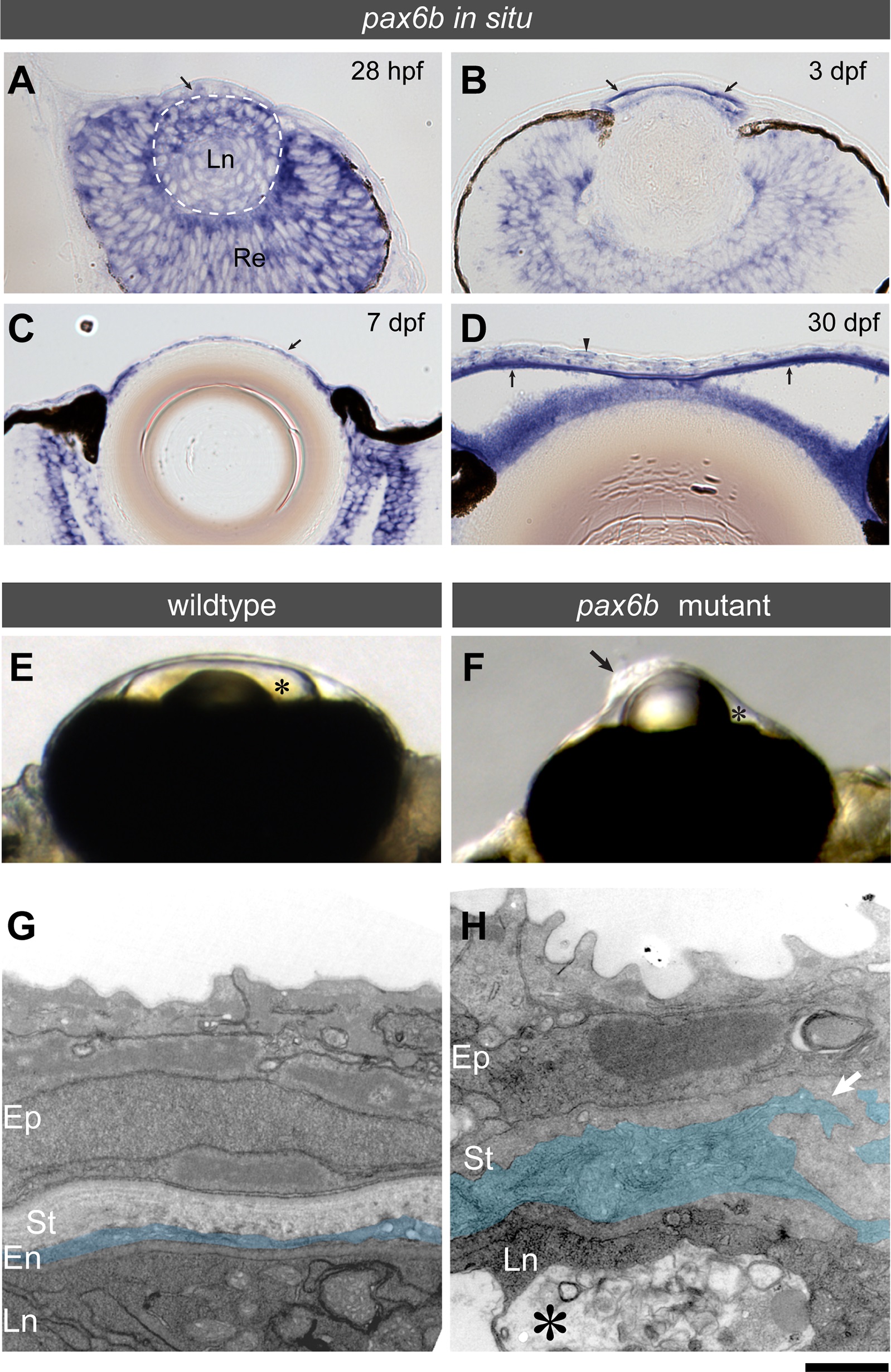Fig. 6
pax6b mutants (also named sunrise) present an abnormal anterior chamber with severe corneal endothelium defects.
(A-D) pax6b in situ expression at 28 hpf (A), 3 dpf (B), 7 dpf (C) and 30 dpf (D). Transverse sections through the eye are shown with the ventral side left. (A) At 28 hpf, only a marginal level of pax6b transcripts is found in the ocular mesenchyme (arrow), well in contrast to high expression levels in the developing retina (Re) and the lens (Ln, stippled circle). (B-D) At 3 dpf, cells in the developing anterior chamber start to express pax6b (arrows in B), and its expression is maintained at 7 dpf (arrow in C) and 30 dpf (arrow in D). At 30 dpf, the corneal epithelium expresses pax6b transcripts (arrowhead, D) and its expression is maintained in the adult (Fig. 2E). (E-H) The anterior chamber phenotype of a pax6b mutant. (E-F) At 7 dpf, wildtype embryos have a well-formed anterior chamber (asterisk, E), while pax6b mutants show almost no anterior chamber (asterisk, F) and severely malformed corneal structures (black arrow, F) appear to be directly in contact with the lens. (G-H) Ultrastructure analysis of the cornea at 7 dpf. Wildtype embryos show the corneal endothelium (En, pseudo-coloured in blue) as consistent monolayer of cells. pax6b mutants lack a well formed corneal endothelium, and abnormal mesenchymal cells (pseudo-coloured in blue) with cellular protrusions (white arrow) were observed instead. Vacuolar deposits were present in the lens (asterisk). Ep: corneal epithelium, St: corneal stroma. Ln: lens. Scale bars: (A-D) 35 Ám, (E-F) 93 Ám and (G-H) 1.0 Ám.

